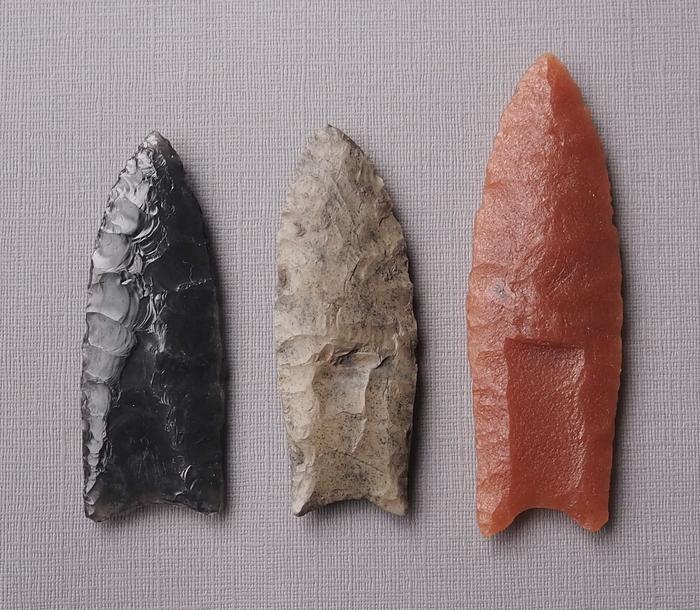
Imagine being charged by a woolly mammoth. You hold a wooden spear with a razor-sharp stone tip. Do you hurl it at the 10,000-pound animal and hope it pierces its thick leathery skin? Or do you stay put, plant the base into the ground and trust that the beast will impale itself?
The conventional wisdom — both scientific and cultural — has long favored the first version. But archeological evidence and an experimental approach shows that the second may have been more realistic and common during the Ice Age, according to a study in PLOS ONE.
What are Clovis Points?
The study drew on nearly 100 years of archeology, starting with the Clovis point. Clovis points are stones shaped into arrowheads or spearheads with razor-sharp edges and fluted indentations. They are named for Clovis, New Mexico, where the stones were first discovered almost a century ago.
The stones are among the most common archeological find in North America from that time. At least 13 of the points have also been found within mammoth fossils — indicating that they had been used successfully for hunting. But the question remained: how?
For Scott Byram, a researcher at the University of California, Berkeley, the base of the points held an important clue. The grooves carved into each point could allow it to slide down the shaft upon impact. A fixed point, by contrast, would be more likely to shatter when it hit dense material, especially bone.
Read More: What Are Fossils and Where Are They Found the Most?
Hunting a Massive Ice Age Animal
The use of braced pikes in hunting was not a novel idea. The team looked at historical images depicting that technique — including a fresco from Pompeii and a 17th century painting Frans Snyder painting. Military accounts from both history and literature have also included recollections of the technique.
Byram says standing one’s ground against a massive Ice Age animal was probably scarier than hurtling a spear from farther away. But that technique was probably more effective.
“It actually provided more defense for the person who’s standing there, because it actually stops the animal that’s coming towards them,” says Byram. “That’s why they were used in military situations for 2000 years — to stop war horses that were charging a line of soldiers.”
Physics is also on the side of the planted pike technique. A spear braced against a charging animal would deliver about 10 times the force than a thrown one. To test those physics, the team recreated some of the impalement conditions. They built a tower that allowed them to drop different weights from various heights onto an oak plank representing a mammoth’s skin and bones.
“It didn’t look much like a hunt,” says Byram.
Read More: Where Woolly Mammoths Roamed, Humans Trailed Close Behind
Revisiting Hunting Scenes in Cave Art
However, the technique did show that the stone tip could penetrate the plank without shattering. Now that they’ve established proof that the concept could work, they want to recreate more lifelike conditions — perhaps by using a log swinging like a pendulum.
The experiment might also cause archeologists to revisit North American pictographs and petroglyphs depicting hunting. Many show such scenes — but some are ambiguous. For instance, it can be unclear if some lines in that ancient art illustrate objects or motion.
“We’re going to take a new look at some of the rock art that we’ve known about for a long time, but maybe didn’t interpret the right way,” says Byram.
Read More: 44,000-Year-Old Cave Art Shows A Hunt Filled With Fantastical Creatures
Article Sources
Our writers at Discovermagazine.com use peer-reviewed studies and high-quality sources for our articles, and our editors review for scientific accuracy and editorial standards. Review the sources used below for this article:
Before joining Discover Magazine, Paul spent over 20 years as a science journalist, specializing in U.S. life science policy and global scientific career issues. He began his career in newspapers, but switched to scientific magazines. His work has appeared in publications including Science News, Science, Nature, and Scientific American.











